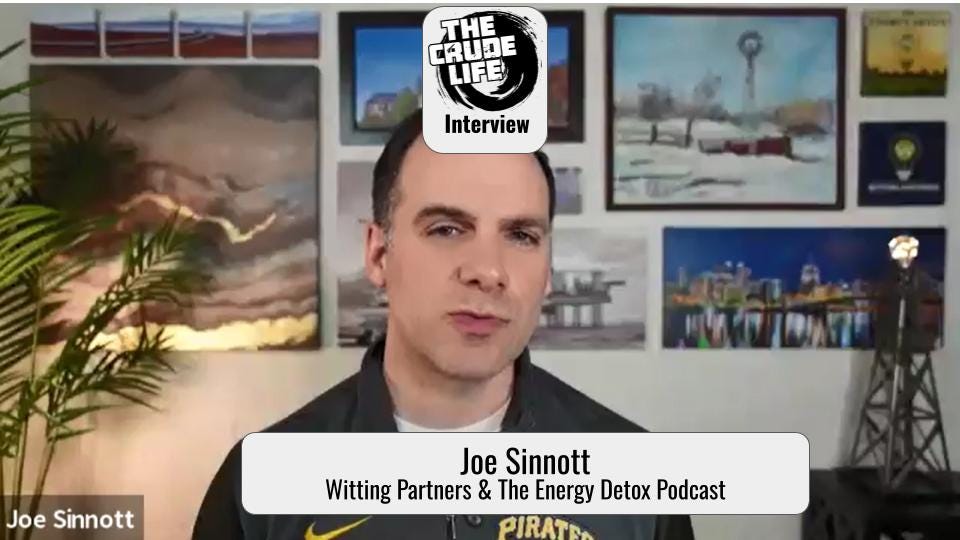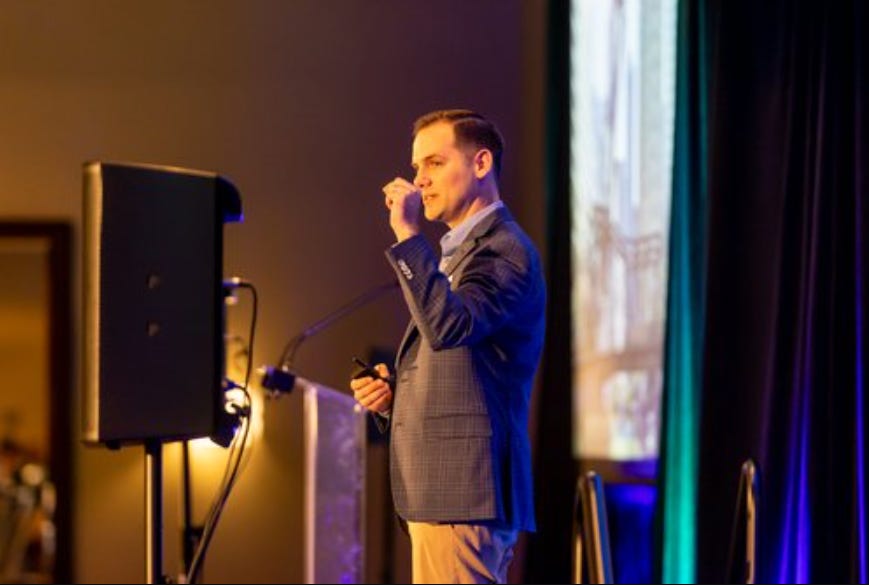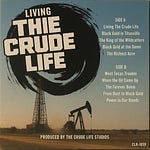When a high-impact, well-liked employee walks out the door for the last time, whether it’s for a better opportunity, a career pivot, or personal reasons, what they leave behind is more than an empty chair.
In many organizations, these team members serve as cultural touchstones—known for their insight, camaraderie, or institutional knowledge. So, what happens when they’re gone? For leaders, it’s not just a logistical issue. It’s a cultural crossroads.
Joe Sinnott, an executive coach with Witting Partners and a former engineer in the oil and gas industry, knows this challenge well. While his professional background has roots in the shale plays of Appalachia, his coaching today revolves around helping companies navigate transitions like these—with emotional intelligence and operational clarity.
“Culture Doesn’t Pause When Someone Leaves”
“Most of my time is spent on the upstream side,” said Sinnott during a recent conversation. “So I’ve seen firsthand how people—like lateral wells—run deep and wide in organizations. They affect so much more than you realize until they’re gone.”
Sinnott makes the analogy that just as energy companies now drill multi-mile laterals with minimal surface disruption, some employees quietly exert a wide-reaching influence with minimal visible footprint.
“They’re the person people go to before they go to their manager. They organize events. They make newcomers feel welcome. They translate the corporate speak into something human,” he explains. “You don’t replace that with a LinkedIn job post.”
Emotional Honesty Matters
According to Sinnott, the most common leadership mistake is to “business-as-usual” the transition. “You have to name it,” he said. “If someone was influential, acknowledge it. Let people talk about it. That conversation, believe it or not, reinforces the values you’re trying to keep alive.”
While it may feel easier to push forward with productivity metrics and onboarding plans, employees often interpret silence as detachment.
“Letting the team express a sense of loss builds trust,” Sinnott said. “That doesn’t mean over-glorifying the person. It means validating the shared experience.”
Leadership's Moment of Influence
Sinnott advises leaders to use this moment to show up—not just professionally, but personally.
“You’re being watched,” he says. “People want to see how you handle uncertainty and transition. It’s a litmus test for your values and leadership credibility.”
He suggests holding brief one-on-one check-ins with direct reports and close colleagues of the departed employee—not to interrogate, but to listen. “Ask: ‘What will you miss most about working with them?’ or ‘Is there something we need to keep doing that they used to lead?’” he advises. “The answers will tell you what your culture is craving.”
Reframing the Power Vacuum
One surprising benefit of a star employee’s departure is the vacuum it creates—a vacuum that others can grow into.
“Someone else is going to step up, whether you want them to or not,” Sinnott notes. “The question is, do you guide it, or do you let the vacuum pull in someone unprepared or misaligned with your values?”
This period can become a laboratory for talent development. Sinnott recommends giving employees the opportunity to take on micro-leadership roles or to rotate responsibilities.
“It’s not about anointing a successor,” he says. “It’s about diversifying influence so you’re not vulnerable the next time someone leaves.”
Avoid the Clone Trap
Sinnott also warns against trying to replace the outgoing employee with someone exactly like them.
“That’s like trying to replicate a 5-mile lateral in an area where the rock just doesn’t support it,” he says, bringing the conversation back to his energy roots. “What worked before was a product of the person, the culture, the timing—all of it.”
Instead, Sinnott advises teams to hire based on current needs and future direction, not nostalgia.
“You might not need another ‘culture builder’ right away. Maybe now’s the time to bring in someone who focuses on structure or innovation,” he says. “Let the culture evolve, not calcify.”
Culture Is What Remains
At the end of the day, Sinnott believes that the departure of a popular employee is a litmus test of whether the culture was dependent on one person—or embedded in the behaviors and systems of the group.
“If one person leaves and everything falls apart, you didn’t have a culture. You had a personality center,” he says bluntly.
His advice? Take the opportunity to recommit to shared values, give others space to step up, and build a more distributed, resilient company culture.
The Bigger Picture
Interestingly, Sinnott sees a parallel in the oil and gas world he came from.
“Just like how laterals grew from 3,000 feet to 5 miles over the years, company culture can evolve with the right structure and vision,” he says. “But it doesn’t happen by accident. It takes leadership, adaptation, and an honest look at your foundations.”
In other words, the most valuable thing a departing employee leaves behind isn’t just their work—it’s the opportunity for others to rise, rebuild, and refine what the company stands for.
HR QUICK GUIDE: Navigating Culture After a Key Employee Leaves
🧭 1. Acknowledge the Departure
Goal: Preserve morale by validating the loss.
✅ Send a company-wide message.
✅ Hold a short team debrief or huddle.
🧠 2. Identify Hidden Roles
Goal: Understand cultural impact.
✅ Ask: Who did people turn to for support, knowledge, or positivity?
✅ Map out informal influence and mentorship webs.
❌ 3. Don’t Hire a Clone
Goal: Evolve, don’t replicate.
✅ Revisit your team’s current and future needs.
✅ Frame the job post around function—not personality.
🌱 4. Empower New Voices
Goal: Strengthen distributed leadership.
✅ Rotate meeting facilitators, project leads, and mentors.
✅ Offer short-term trial roles or responsibilities.
❤️ 5. Lead with Emotional Intelligence
Goal: Build trust and psychological safety.
✅ Have 1:1s to check in on morale.
✅ Listen more than you talk.
✅ Say: “What’s something [Name] did that we should continue?”
✅ BONUS TIP:
Conduct a “Cultural Continuity Audit”
What traditions, attitudes, or unwritten rules did they carry?
Can these be documented, distributed, or refreshed?
Joe Sinnott’s Quick Guide to Culture Transition
Acknowledge the Departure – Give space for teams to talk about the person’s contributions.
Identify the Unspoken Roles – Who now handles morale, mentoring, or communication?
Resist the Clone Instinct – Hire for where the team is going, not where it’s been.
Create Leadership Labs – Let others test out roles and grow into influence.
Model Emotional Intelligence – Let your team see you lead with both logic and empathy.
To contact Sinnott, click here. To listen to The Energy Detox Podcast, click here
Witting Partners specializes in enhancing leadership effectiveness within the energy industry through tailored programs and insights. They focus on helping high-potential leaders manage the industry's demands while maintaining long-term sustainability. Their approach combines extensive oil & gas experience with innovative leadership strategies to foster peak performance.
May 30, 2025 - The SW App Drilling team recently celebrated achieving several records on the BW Edge MSH 210H, which the crew referred to as a ‘postcard well’ for its near picture-perfect status. Most notably, this well featured the U.S.’s longest lateral to date at more than five miles.
Rig EDC 41: A Record-Breaking Well
Longest lateral in U.S. Land (27,657 feet)
Longest well in U.S. Land (34,507 feet)
Longest single bit/BHA run in U.S. Land (30,368 feet)
48-hr footage world record (21,314 feet)
Expand Energy 24-hr footage record (12,370 feet)
Expand Energy footage per day record (2,774 feet/day)
Ultra-long laterals enable Expand Energy to access significantly more subsurface acreage from fewer surface locations, minimizing the environmental footprint and operational impact. This is particularly valuable in regions like Appalachia, where surface access is limited. By reaching premium reservoir targets from a distance, we not only optimize resource recovery but also enhance capital efficiency and well economics — both of which are vital in today’s market conditions.
“Breaking records is the outcome of relentless preparation, innovation and collaboration,” said Sebastian Ziaja, SW App Senior Drilling Engineer. “With support from leadership, our Drilling and Asset teams work months in advance to engineer optimal well designs. Once execution begins, seamless coordination among our Drilling team, rig crews and service providers drives top-tier performance. It’s a collective effort rooted in trust, expertise and a shared commitment to excellence.”
Operational records are typically maintained and managed by drilling service providers and industry partners. These groups verify records achieved across the U.S., offering third-party confirmation to maintain transparency and consistency for benchmarking.
Ziaja added, “Ultimately, record-setting performance reflects Expand Energy’s commitment to operational excellence and long-term value creation.”
Everyday your story is being told by someone. Who is telling your story? Who are you telling your story to?
Email your sustainable story ideas, professional press releases or podcast submissions to thecontentcreationstudios(AT)gmail(DOT)com.
CLICK HERE FOR SPECIAL PARAMOUNT + DISCOUNT LINK
Two mob families clash in a war that threatens to topple empires and lives.
Starring: Tom Hardy, Pierce Brosnan, Helen Mirren
Paramount+ offers its subscribers a plethora of quality content.
From instant classic films to banger TV shows like 1883 and Smile 2, there’s no shortage of entertainmen t to explore.
How about the new series Happy Face? It’s getting fabulous reviews.
Start Streaming Today!






















Share this post